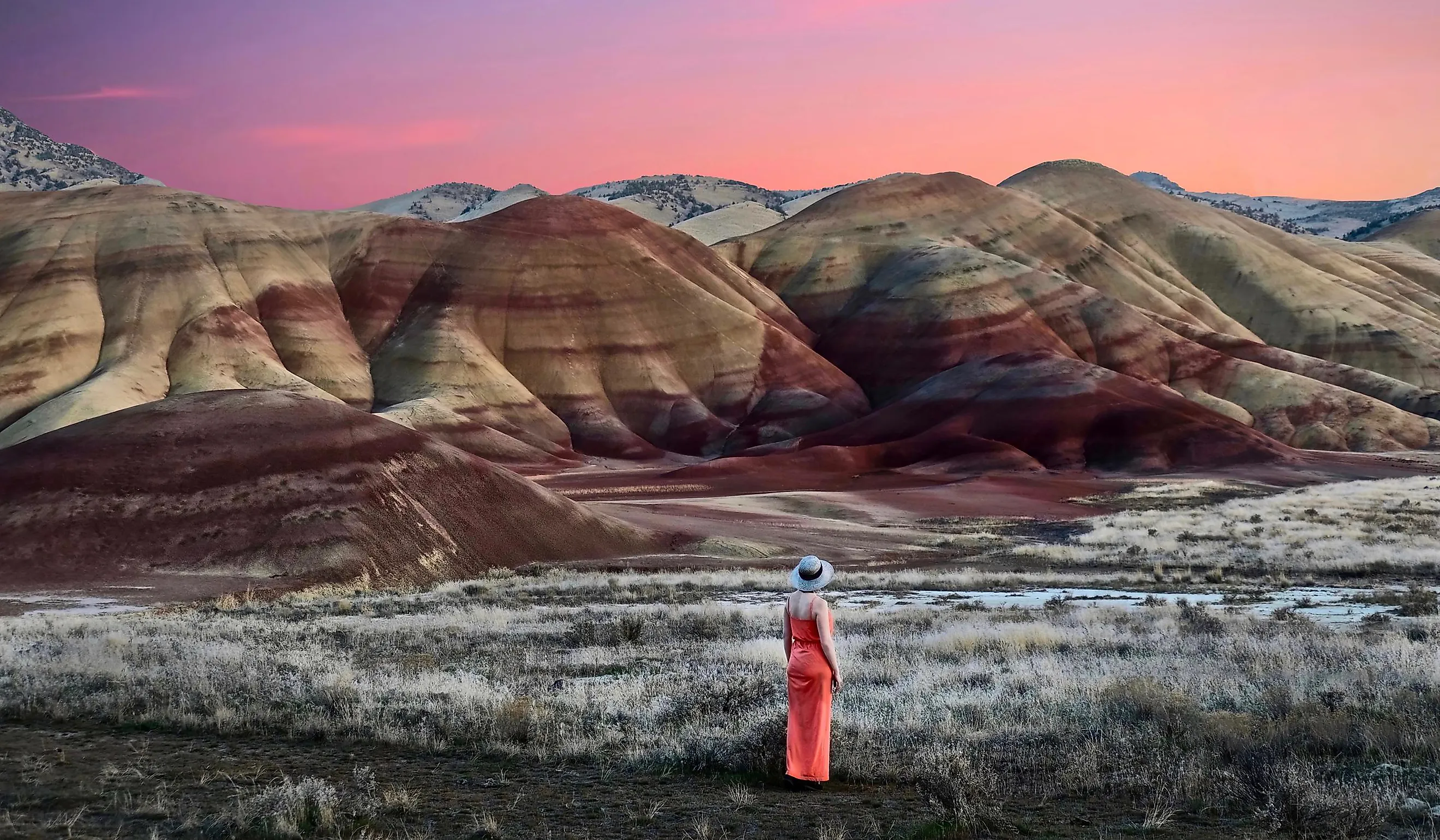
7 National & State Parks In Oregon You Have To Visit
Oregon is host to some of the best natural scenery in the United States. With its highly varied landscapes, ranging from arid deserts to snowcapped mountains and coastal rainforests, it should come as no surprise that it is the site of numerous beloved state and national parks.
If you're not yet familiar with Oregon, then this list will get you started with some must-visit recommendations, whether you want to hike up an ancient volcano, lounge along a river, ski at a world-class resort, camp beachside at the Pacific Ocean, or whatever else!
Crater Lake National Park
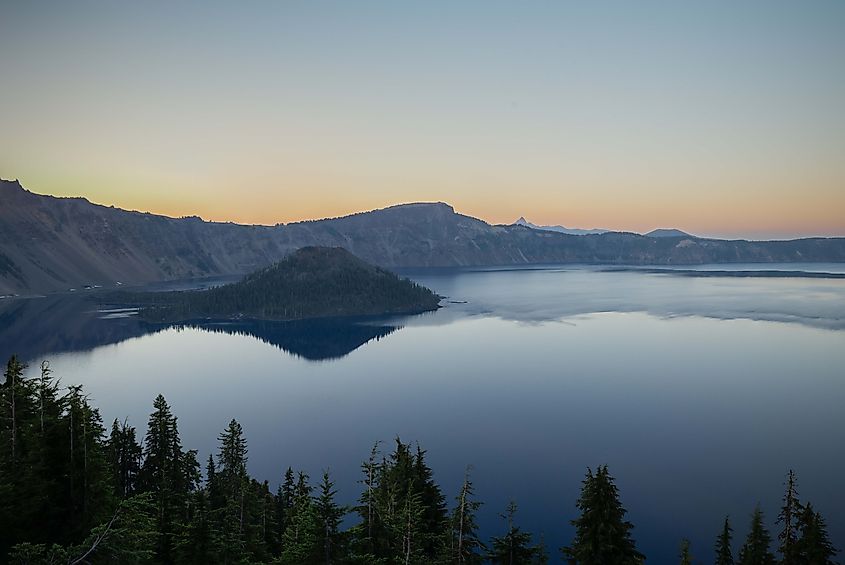
Crater Lake National Park protects the deepest lake in the United States, one that was formed around 7,700 years ago after the collapse of Mount Mazama. The lake reaches a depth of 1,943 feet and is known for its intense blue color and remarkable clarity, fed entirely by rain and snowmelt.
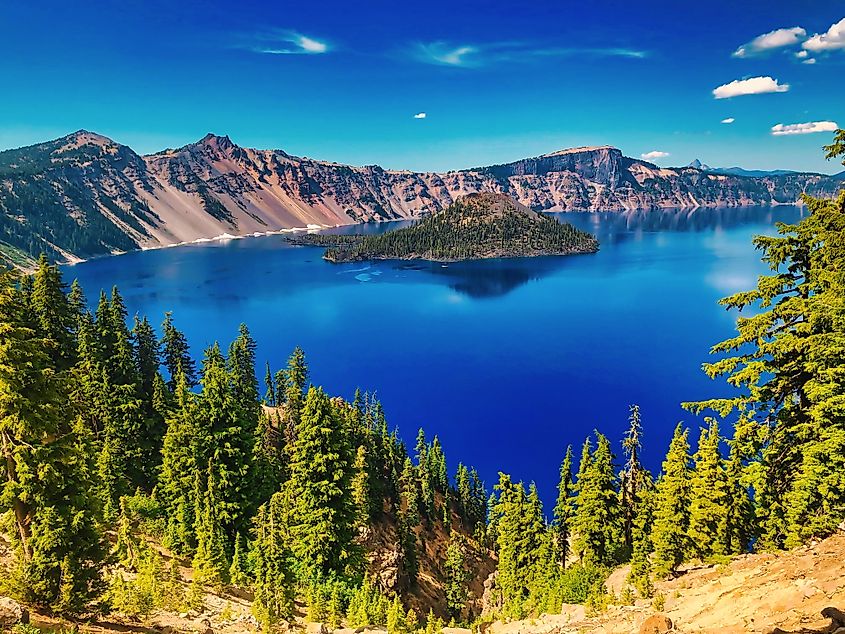
The best way to explore this impressive body of water is via the Rim Drive, which circles the caldera for 33 miles, offering numerous different views and access to various scenic overlooks, trailheads, and picnic areas. Furthermore, hikers can take the steep Cleetwood Cove Trail down to the water (the only legal access point) or follow the Garfield Peak Trail for one of the best views of the lake (and an amazing spot to catch a sunset or sunrise, too). You'll likely see Wizard Island during your time here, a cinder cone rising from the lake, which is accessible by boat tours in the summer.
However, Crater Lake is open year-round, though access is limited in colder months due to high levels of snow. In winter, the park becomes a destination for cross-country skiing and snowshoeing for those who can access it. This is also a significantly quieter time to come.
With its high-elevation terrain, fascinating volcanic geology, and delicate alpine ecosystem, Crater Lake serves as both a significant natural landmark and a main centerpiece of Oregon’s renowned outdoor tourism industry.
Silver Falls State Park
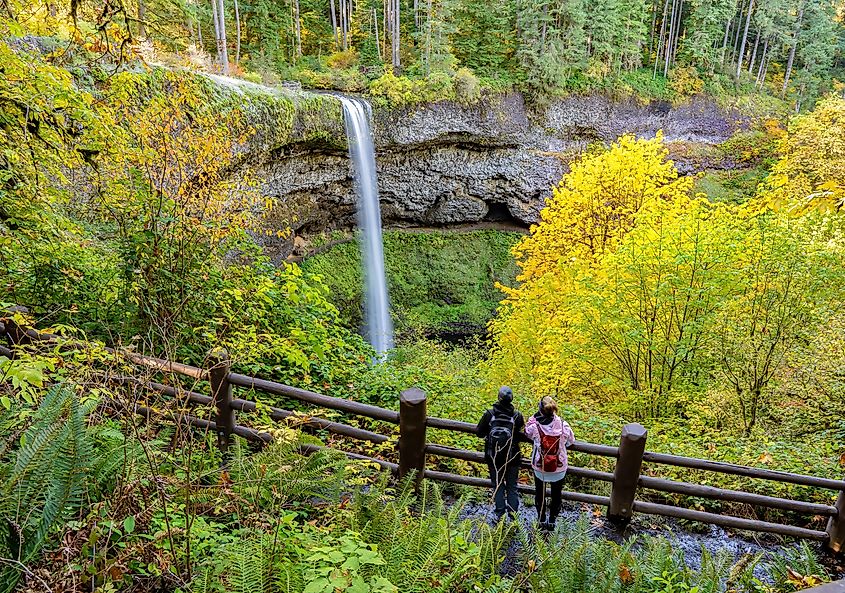
Silver Falls State Park, located east of Salem in the foothills of the Cascade Range, is Oregon’s largest state park and one of its most visited. The park covers over 9,200 acres of lush, forested canyons, upland meadows, and streams, with more than 35 miles of trails for hiking, horseback riding, and mountain biking to match.
It’s best known for the Trail of Ten Falls, a 7.2-mile loop that passes behind, alongside, and above ten distinct waterfalls, some plunging nearly 100 feet! South Falls and North Falls are the most iconic, each offering walk-behind viewpoints carved into the basalt cliffs. While popular in summer, the waterfalls are especially powerful in spring after snowmelt. Moss-draped trees, seasonal wildflowers, and abundant wildlife further make this park a year-round destination for nature lovers and landscape photographers.
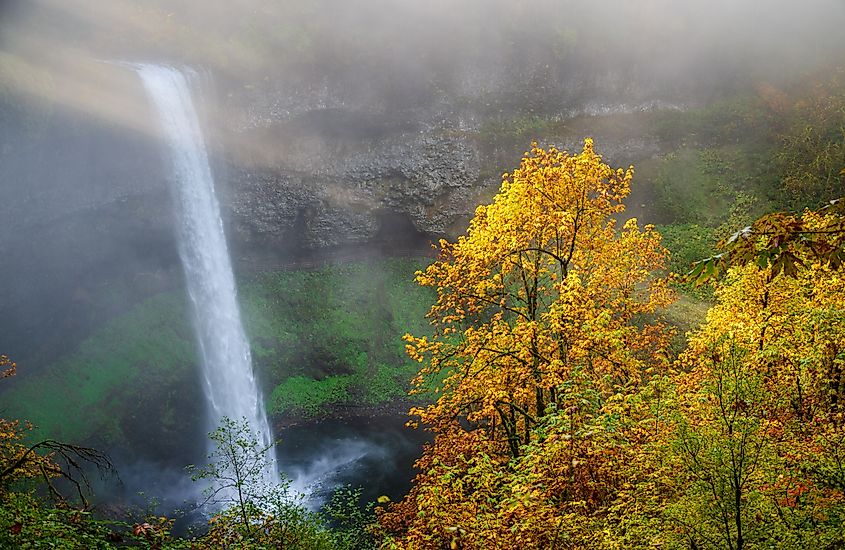
Originally developed by the Civilian Conservation Corps in the 1930s, Silver Falls remains a benchmark for Oregon’s state park system and is less well-known worldwide than some of the region's national parks. If you're interested in an extended stay, it has all the same facilities that you may come to expect from the national park systems, including a historic lodge, cabins, RV sites, tent camping, and day-use areas.
Smith Rock State Park
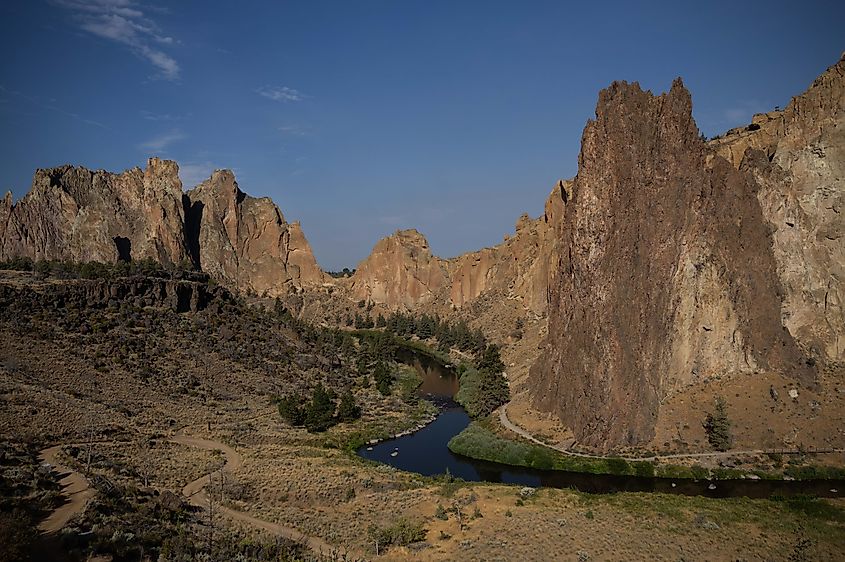
This smaller park spans just over 650 acres, but sees heavy use due to its popularity for several different activities. Smith Rock State Park in Central Oregon is a major destination for rock climbers, hikers, paddlers, and photographers alike. A year-round destination, it’s especially popular in spring and fall when temperatures in this sometimes sweltering part of the state are more moderate.
Located near the town of Terrebonne, it boasts a number of towering volcanic and sedimentary rock formations carved by the Crooked River. With that, it’s widely regarded as one of the birthplaces of American sport climbing, including over 1,500 climbing routes ranging from beginner to expert in difficulty.
Besides the climbing, however, the park’s foot trails offer a variety of terrain and elevation for more casual adventurers. The Misery Ridge Trail, for example, provides one of the most direct ascents to a high viewpoint, rewarding you with sweeping sights of the park’s signature rock spires, most notably the "Monkey Face," and the Cascade Mountains beyond. On the other hand, the River Trail offers a less strenuous loop with access to wildlife viewing spots and riverside scenery. The area also includes limited camping, day-use areas, and seasonal restrooms.
John Day Fossil Beds National Monument
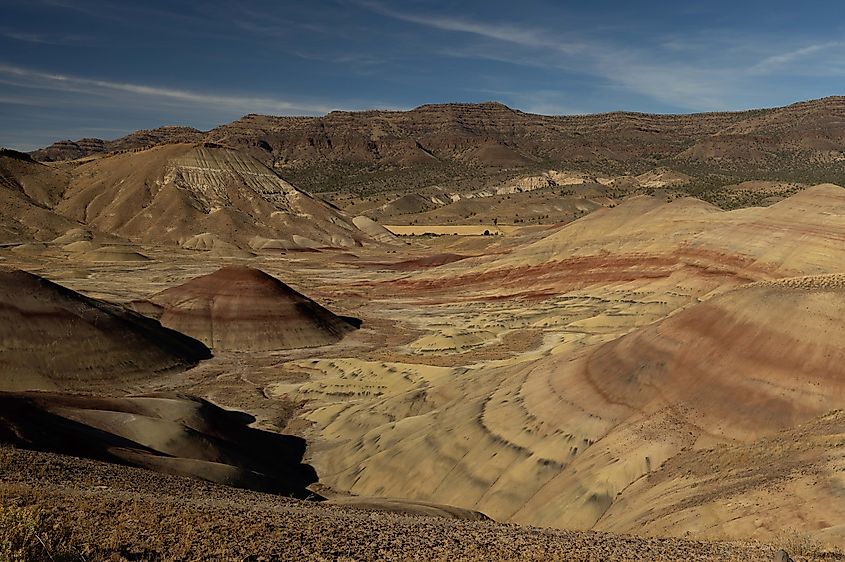
John Day Fossil Beds National Monument encompasses over 14,000 acres across three distinct units, preserving one of the richest fossil records of Cenozoic-era life in North America.
The Painted Hills Unit, near Mitchell, is the most photographed and is known for its layered red, gold, and black claystone hills, all shaped by millions of years of changes in climate. Moving on, the Sheep Rock Unit houses the Thomas Condon Paleontology Center, where you can view fossils and learn about extinct mammals, plants, and ancient ecosystems that have been discovered locally. The nearby Blue Basin Trail in this unit leads through eroded blue-green claystone canyons. Then, the Clarno Unit, once part of a long-gone tropical forest, now features fossilized logs and plant material embedded in rock formations for you to see.
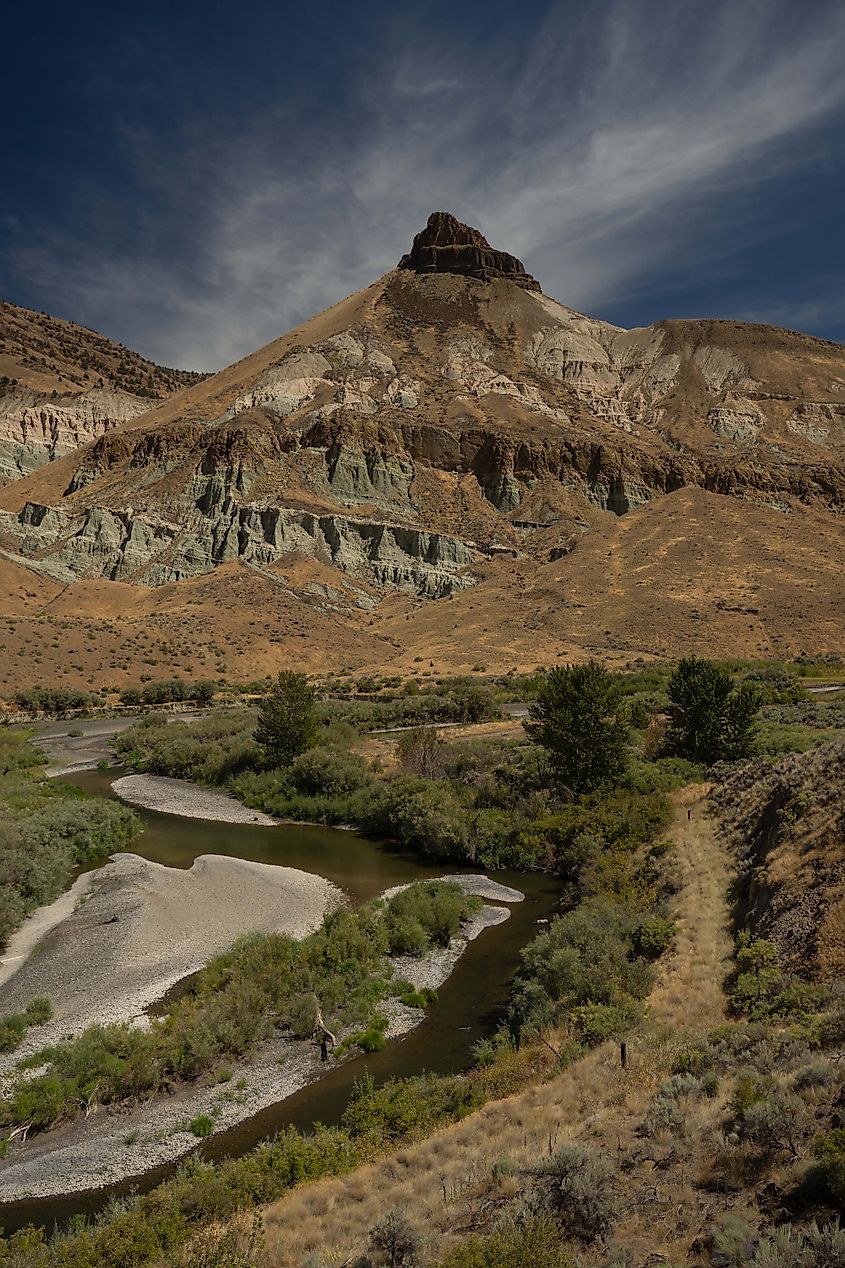
Many more hiking trails, interpretive exhibits, and many viewpoints are accessible at each unit, and the best times to visit are spring and fall, when temperatures are mild in this arid, desert-covered region of the state. The subsections of John Day Fossil Beds are non-contiguous but connected by scenic driving routes through high desert, ranchlands, and river valleys that are a pleasure on their own to pass through.
Ecola State Park

Ecola State Park stretches along nine miles of Oregon’s north coast, offering a pleasant mix of forested headlands, secluded coves, and high bluff viewpoints. Trails here wind through Sitka spruce forests, with regular openings that reveal coastal landmarks like Haystack Rock and Tillamook Rock Lighthouse.
The Clatsop Loop Trail is a great way to introduce yourself to the landscape, forming a 2.9-mile route that provides access to scenic overlooks and historical markers related to the Lewis and Clark Expedition. Moroeve, Indian Beach, is popular for surfing, tidepool explorations, and sunset photos. Wildlife sightseeing is also common year-round, with gray whales visible offshore during migration seasons and bald eagles nesting along the cliffs.
Note that Ecola’s terrain is subject to seasonal weather and erosion, so trail conditions can vary from time to time. Regardless, day-use facilities include picnic areas, restrooms, and limited parking are available, and despite its proximity to major coastal towns like Seaside and Cannon Beach, the park maintains a sense of seclusion due to its dense coastal vegetation and rugged Pacific Northwest topography constraining urban development.
Mount Hood National Forest

Mount Hood National Forest boasts over 1.1 million acres of woodlands, mountains, and lakes, anchored by the 11,245-foot stratovolcano that gives the forest its name. Drastic seasonal shifts bring eye-catching patches of wildflowers in summer, heavy snowfall in winter, and changing conditions that may limit access year-round. Regardless of when you choose to come, this area is one of the most beautiful and most visited corners of the state.
Recreation ranges from backcountry camping to fishing, mountain biking, and scenic driving along the Mount Hood Scenic Byway. Located just over an hour from Portland, the forest includes several named alpine lakes, rivers, waterfalls, glaciers, and over 1,000 miles of trails to check out. Popular hiking routes include the Timberline Trail, a 40-mile loop all the way around the mountain, and shorter access trails to destinations like Mirror Lake, Ramona Falls, and Tamanawas Falls. The forest also includes parts of the Pacific Crest Trail.
Whether staying for a weekend or just an afternoon, another must-visit destination here is the Timberline Lodge, a National Historic Landmark built in the 1930s that sits at 6,000 feet on Mount Hood’s south side and operates year-round for skiing, hiking, and lodging should you want to spend the night in luxury.
Columbia River Gorge National Scenic Area
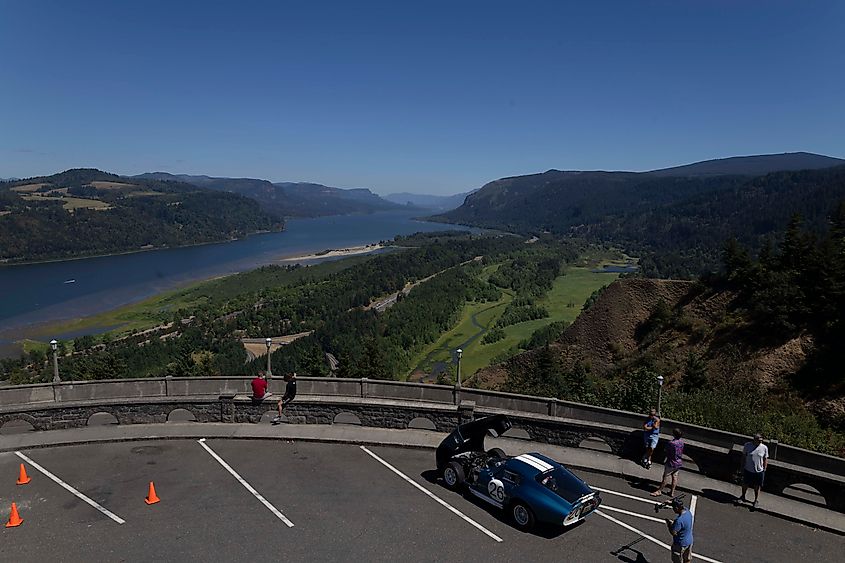
The Columbia River Gorge National Scenic Area boasts a massive 292,500 acres along the Oregon-Washington border, protecting an 80-mile stretch of canyon carved by the Columbia River. It was established in 1986 and is jointly managed by federal, state, and tribal agencies.
On the Oregon side, the Historic Columbia River Highway provides roadside access to a series of waterfalls, including Multnomah Falls, which drops 611 feet and is the most visited attraction in the Pacific Northwest in general. Other key stops include Latourell Falls, Wahkeena Falls, and Horsetail Falls, all accessible via short trails or roadside pullouts.
The region also contains longer hiking routes like the Eagle Creek Trail and Dog Mountain Trail, offering elevated views of the gorge alongside tons of wildflowers and more of the gorge's wildlife. Diverse local ecosystems range from temperate rainforest to dry grasslands.
In addition to hiking and photography, the gorge is popular for windsurfing, particularly near the town of Hood River. Be sure to also visit the Vista House at Crown Point, the centerpiece of the park, providing panoramic views above the gorge, a neat look at early 20th-century engineering in its small museum, and a gift shop.
See All of Oregon's Natural Beauty
Oregon is one of the few states in the country that arguably contains all of the landscapes you could possibly want to see, from the deserts of John Day Fossil Beds to the snowcapped peaks of the Mount Hood National Forest, the remote sandy beaches of Ecola Park, and several other biomes of note. Wherever you go, Oregon has done an incredible job of protecting and maintaining these green spaces for generations to enjoy now and into the foreseeable future.











